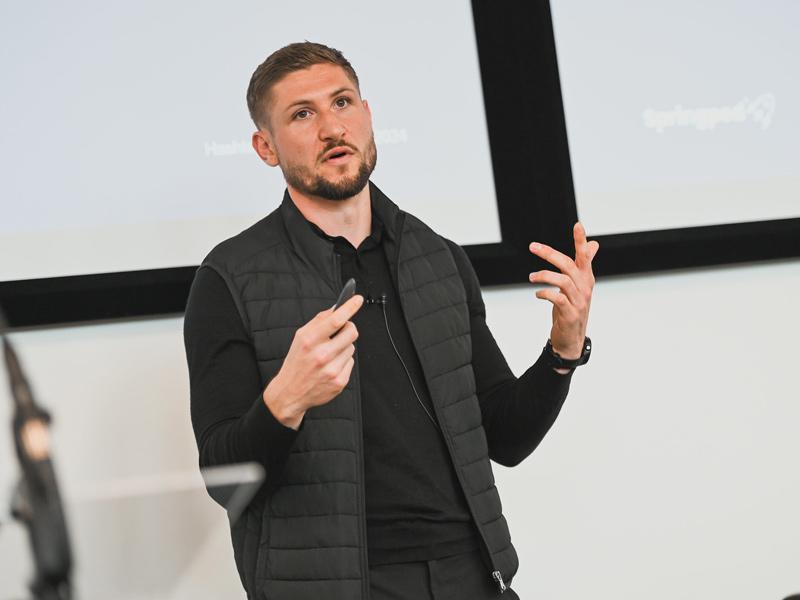Universities encounter different types of prospective students during the application process, each with specific needs. During a session held in partnership with Springpod at the 2024 THE HashtagHigherEdUK event, Steven Morton, head of B2C marketing at Springpod, explained why universities should personalise their engagement with prospective students early in the decision-making process. He spoke about how Springpod’s online community of student users has helped to create personas that represent prospective students, each with varying degrees of confidence and certainty about their higher education goals.
The cost of living crisis, A-level grade drops and exam anxiety have compounded to create the most demanding decision-making landscape in recent years for young people, Morton said. Springpod found that these factors affect all young people but how they respond varies. This means delivering the right information for each student in the right way is critical.
By surveying its user data, Springpod was able to understand the common approaches and routes that students take when considering their higher education options. Morton shared four student personas that Springpod has identified based on its users. “We’ve looked at our database and we’ve looked at the behaviour of the users within them to find our key clusters and segments,” Morton said. These segments can be used by universities to identify prospective student types and create tailored messaging.
The first persona Morton introduced was called Perusing Pasha. This low-confidence candidate type is typically interested in three unrelated subject areas. They’re more reactive than proactive and are unwilling to engage with direct response advertising because it makes them feel more pressured.
“When you’re thinking about how to engage them, they really need to understand how something benefits them and they need to be entertained at the same time as informed,” Morton said. This persona prefers to browse at their own pace, so giving them agency over how they engage with content is critical. Their decision-making timeline usually extends to the summer as they typically end up relying on Clearing.
Morton introduced Selective Samira as the next persona on the confidence scale. “Pasha might be your low confidence underprepared but Sameera is your anxious overpreparer,” Morton said. Such students feel a lot of pressure and want to explore all options available. “They want to compare and contrast and get kinaesthetic with all of the content that we have online,” he added.
The best way to engage with this type of prospective student is to strike a balance between informational and interactive content and offer them the chance to discuss their findings with peers. “Creating channels and curating conversations between a Sameera and other students around them is going to resonate well,” he added.
In the mid-to-high confidence band sits Interested Isla. These students are detail-orientated and will event investigate the modules included on a course, Morton said. This student persona looks at courses based on how it helps them to connect what they are studying at A-level and their choice of career. They will research application guidance and welcome any last-minute advice that might help them to optimise and fine-tune their personal statement and application.
The smallest segment among Springpod’s users is Focused Francis. These students are high achievers who are driven and confident about their specific academic and career goals. They welcome detailed information and targeted communications from universities that help them take the next steps in their academic journey.
By identifying target segments and their probable pathways in the decision-making process, universities are able to customise their marketing messages during recruitment to improve engagement and enrolment rates.
The speaker:
- Steven Morton, head of B2C marketing, Springpod
Find out more about Springpod.


comment